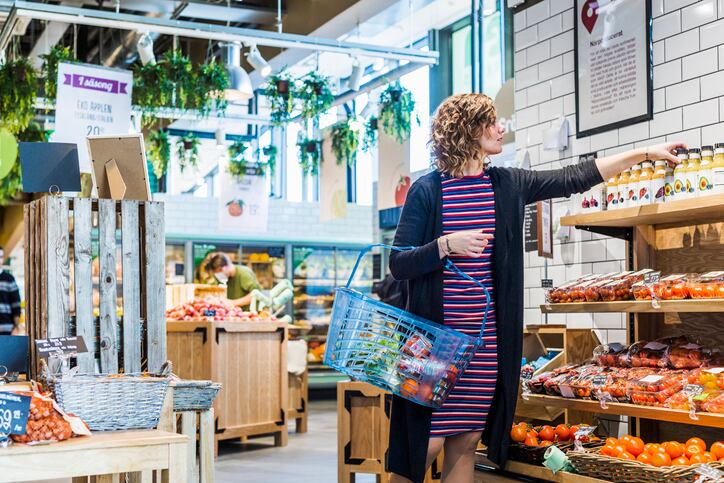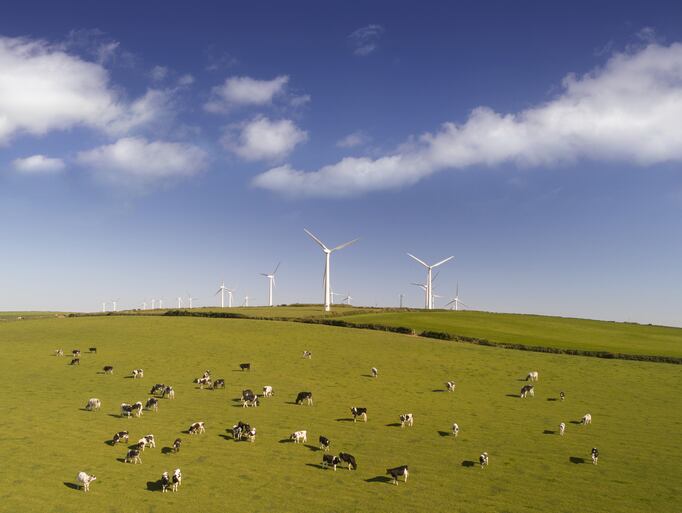Despite this slow down, industry sales in the US are coming off a stronger base compared to pre-pandemic and set to surpass $300b by 2024 and $400b by 2030 – up from the 7.7% increase in 2021 to $274b, Carlotta Mast, senior vice president and market leader at New Hope, told a packed room of mostly unmasked attendees.
“The COVID boost … to our industry growth was significant in 2020, and we’re continuing to see the impacts of that boost, and we expect that to remain for at least the next four, five years,” Mast said, noting that in 2020 COVID prompted an additional $7b in sales, which “grew” into $11.4b in additional sales in 2021 and is anticipated to drive an additional $10.08b in 2022 and $4.7b in 2023.
Not all of this growth represents increased demand, but rather comes partly from higher prices to offset rising inflation, noted Nick McCoy, managing partner with Whipstitch Capital.
He explained that in 2021 the inflation rate for all food products was 7% and promos dropped about 13%. Among wellness products, however, the average retail price increased only 5% and promotions dropped only 7%.
McCoy argued that this difference suggests some wellness brands may be leaving money on the table – a practice that might be rooted in good intentions to protect consumers, but which could be harming margins.
“I know it is hard … but taking price is what is going to keep our margins in line with those big CPGs that are ultimately buying companies,” he said.
Higher prices do not account for all of the growth, according to Mast who attributed the sales bump in part to consumers “paying more attention to their health and wellness,” “investigating brands,” and “cooking more at home,” which is pushing them to purchase more products that are positioned as natural or as specialty and wellness products versus conventional.
“Natural and specialty & wellness positioned products are growing year on year [3.6%] to 4% versus conventional products just over 0.5%,” Mast said. “To bring it a little further home, right now wellness products are about a quarter of overall CPG sales, but really importantly they are driving 68% of the growth.”
Food & beverage drive natural, organic sales growth
While these attributes are driving sales growth across all natural and organic categories, food and beverage growth momentum is the main engine – driving nearly 70% of industry sales, according to Mast.
She noted that in 2020, US sales of natural, organic and functional food and beverage grew upwards of 9%. But as with the overall natural and organic category, growth slowed the following year to 7.2%, but it still brought in a whopping $187b in 2021.
Again, like the larger natural and organic industry, food and beverage sales growth in the segment will continue to slow in coming years, dropping to about 6.6% in 2022 and 5.5% in 2023, before ticking back up to 6% in 2024, according to SPINS data.
Organic can build on new consumer trial during COVID with higher ethical standard
Drilling down further to look at just organic, Mast reports that sales in this subsegment increased 6% to $15.7b last year.
Mast acknowledge that part of this growth was “due to consumers needing to buy organic for the first time” during the pandemic “because perhaps it was the only thing available to them as they were pantry loading.”
However, she added, she expects organic to continue to see strong growth because brands are paying more attention to supply chain, environmentally sustainable practices, animal welfare, regenerative agriculture and other key trends that consumers increasingly care about.
Functional products are sustaining higher growth rates
Of all the natural and organic subsegments, functional food and beverage products were able to hold onto COVID driven sales growth at sustained levels the longest.
According to SPINS data, in 2020, sales growth of functional food and beverages jumped about 3 percentage points from 5.5% growth in 2019 to 8.3% in 2020. It maintained this growth level in 2020 to add $83.78 in sales.
This surge is expected to peter slightly in the coming years, dropping closer to 5% sales growth in 2022, 2023 and 2024, according to SPINS data projections.
Still, some breakout winners to watch in this segment include functional beverages, frozen products and snacks, with leading ingredients including electrolytes, mushrooms, adaptogens, healthy fats, and prebiotics.
Consumer interest in functional ingredients and better-for-you products also is bleeding over into more traditional comfort food categories, with Mast noting 69% of consumers looking for snacks that balance health and taste.
As such, she noted, a 15% increase in keto friendly chips, 65% increase in plant-based jerky, 11% in high protein ice cream, 19% in naturally positioned sodas and 10% in naturally positioned candy.
Much of this growth was driven by a significant drop in consumers’ satisfaction with their health during the pandemic when 21% said they were either dissatisfied or extremely dissatisfied with their health compared to 15% pre-COVID.
“While I think this is a sad statistic for people overall … it is an important opportunity for our industry to put out good quality, efficacious products that can help consumers get back to where they really want to be with their overall wellness,” Mast concluded.



